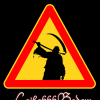Invite Scene - #1 to Buy, Sell, Trade or Find Free Torrent Invites
#1 TorrentInvites Community. Buy, Sell, Trade or Find Free Torrent Invites for Every Private Torrent Trackers. HDB, BTN, AOM, DB9, PTP, RED, MTV, EXIGO, FL, IPT, TVBZ, AB, BIB, TIK, EMP, FSC, GGN, KG, MTTP, TL, TTG, 32P, AHD, CHD, CG, OPS, TT, WIHD, BHD, U2 etc.
LOOKING FOR HIGH QUALITY SEEDBOX? EVOSEEDBOX.COM PROVIDES YOU BLAZING FAST & HIGH END SEEDBOXES | STARTING AT $5.00/MONTH!
Scientist Deliberately Pirates Art on a Nanoscopic Scale
-
Check out what our members are saying
Seller is great! Fast to respond and reliable. Had to wait but it's reasonable since seller is at work. 10/10 would buy something else again in the future.i was searching for invitation for tracker i found may sites sell these tracker some of them i did not trust them to send money some of them are expensive i was confused un…Everything was fine. He made a huge effort to find invite for me. Great communication. So if You need an Invite just contact @InviterWell, he was really fast and loved that he didn't ask much and simply sent me an invite. 😊 It was painless and prompt. Thanks a lot, man. Inviter is awesome. Very fast and friendly. Excellent in answering questions and quick transactions. Will do business with again.Reliable and professional service, prompt communication, excellent execution.Il migliore venditore, 100%+Vouch Very Smooth Communication Bought an invite, I will be buying many more invites for sure and hopefully we can build long term relation. Recommended for sure.
Inviter is awesome. Very fast and friendly. Excellent in answering questions and quick transactions. Will do business with again.Reliable and professional service, prompt communication, excellent execution.Il migliore venditore, 100%+Vouch Very Smooth Communication Bought an invite, I will be buying many more invites for sure and hopefully we can build long term relation. Recommended for sure. I highly recommend doing business with this user. He was very quick to answer and deliver when other users couldn't. 10/10 would do business again.fast and good service i rly recomend this oneGreat service and trustworthy. Keep the good work :D Cheers
I highly recommend doing business with this user. He was very quick to answer and deliver when other users couldn't. 10/10 would do business again.fast and good service i rly recomend this oneGreat service and trustworthy. Keep the good work :D Cheers Hi everyone, I am presenting a thought after purchasing an Invite from this site. Inviter was super instantaneous to get back to me after I had questioned if he had any avai…Very good service Fill up all my request Fast and secure Good contact. Trustable seller, 100% money back guaranteed. Traded usenet indexer.Had what I needed! 10/10 Highly recommend. Has the invites for the trackers you need. Seriously. ** I thought these reviews could have been fake. They were not. ** …
Hi everyone, I am presenting a thought after purchasing an Invite from this site. Inviter was super instantaneous to get back to me after I had questioned if he had any avai…Very good service Fill up all my request Fast and secure Good contact. Trustable seller, 100% money back guaranteed. Traded usenet indexer.Had what I needed! 10/10 Highly recommend. Has the invites for the trackers you need. Seriously. ** I thought these reviews could have been fake. They were not. ** … Very happy and satisfied with this site. Bough a legit invite to a very hard to get tracker. The process all in all took about 24 hours but that because the process is very secu…Very informative and pleasant demeanour. Response time was impressive. Certainly lives up to his legacy as well hassle-free transaction all around.Speedy and responsive, excellent rates, have ordered my invites and have not had any issues! 10/10 recommend!Absolutely great, Inviter is very fast and nice when solving queries. I received my invite immediately, thank you so much!Fast and reliable, highly recommend.
Very happy and satisfied with this site. Bough a legit invite to a very hard to get tracker. The process all in all took about 24 hours but that because the process is very secu…Very informative and pleasant demeanour. Response time was impressive. Certainly lives up to his legacy as well hassle-free transaction all around.Speedy and responsive, excellent rates, have ordered my invites and have not had any issues! 10/10 recommend!Absolutely great, Inviter is very fast and nice when solving queries. I received my invite immediately, thank you so much!Fast and reliable, highly recommend. Great & fast service ThanksThe whole transaction process went smoothly, very pleasantProfessional all the way. Informative through the whole process.
Great & fast service ThanksThe whole transaction process went smoothly, very pleasantProfessional all the way. Informative through the whole process. I was nervous spending so much money on an invite at first and there has been some delay due to how hard the access to empornium.me is. But I remained calm and waited for the ve…Real tracker invite that's non-trivial to get with a quick turnaround for the simple act of site participation. Pretty awesome.
I was nervous spending so much money on an invite at first and there has been some delay due to how hard the access to empornium.me is. But I remained calm and waited for the ve…Real tracker invite that's non-trivial to get with a quick turnaround for the simple act of site participation. Pretty awesome. First exchange I made, reasonable price, convenient payment method, simple and instant reactivity, no problem at all.Fairness, speed, professionalism, reasonable price and especially trustworthy. I bought it from you and I will do it again. Thank you.
First exchange I made, reasonable price, convenient payment method, simple and instant reactivity, no problem at all.Fairness, speed, professionalism, reasonable price and especially trustworthy. I bought it from you and I will do it again. Thank you. very communicative, fast responses!
very communicative, fast responses! Wanted an invite and got a fast and nice price from Inviter. Everything went smoothly and I'm very happy with my purchase. I'll definitely make my next purchase with him. 100% r…
Wanted an invite and got a fast and nice price from Inviter. Everything went smoothly and I'm very happy with my purchase. I'll definitely make my next purchase with him. 100% r… -
Our picks
-

Buy Empornium Invite
Inviter posted a topic in Premium Sellers Section,
Offering Empornium.is / Empornium.sx / Empornium.me / Empornium / EMP Invite, PM me for the price.
Commodity URL: https://www.empornium.is/, https://www.empornium.sx/, https://www.empornium.me/
Commodity REVIEW: https://www.invitescene.com/topic/40396-empornium-emp-porn-2020-review/-
-
- 699 replies

Picked By
Inviter, -
-

Buy BroadcasTheNet Invite
Inviter posted a topic in Premium Sellers Section,
For limited time I'm offering BroadcasThe.Net (BTN) Invite, PM me for price.
URL: https://broadcasthe.net/-
-
- 372 replies

Picked By
Inviter, -
-
![[In Stock] Buy REDActed.CH (RED) Invite](//www.invitescene.com/applications/core/interface/js/spacer.png)
[In Stock] Buy REDActed.CH (RED) Invite
Inviter posted a topic in Premium Sellers Section,
For limited time I'm offering REDActed.CH (RED) Invite, PM me for price.
URL: https://redacted.ch/-
-
- 114 replies

Picked By
Inviter, -
-






![[In Stock] Buy REDActed.CH (RED) Invite](https://www.invitescene.com/uploads/monthly_2019_12/Redacted.png.a96849d08b6f36b6140a4ead4a4cceba.png)
Recommended Posts
Join the conversation
You can post now and register later. If you have an account, sign in now to post with your account.